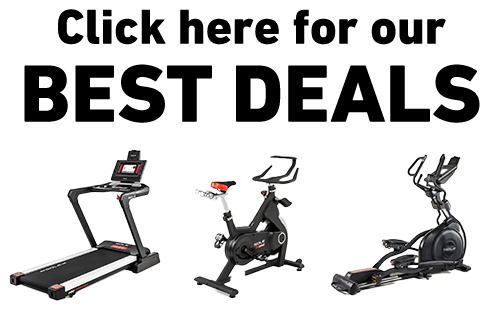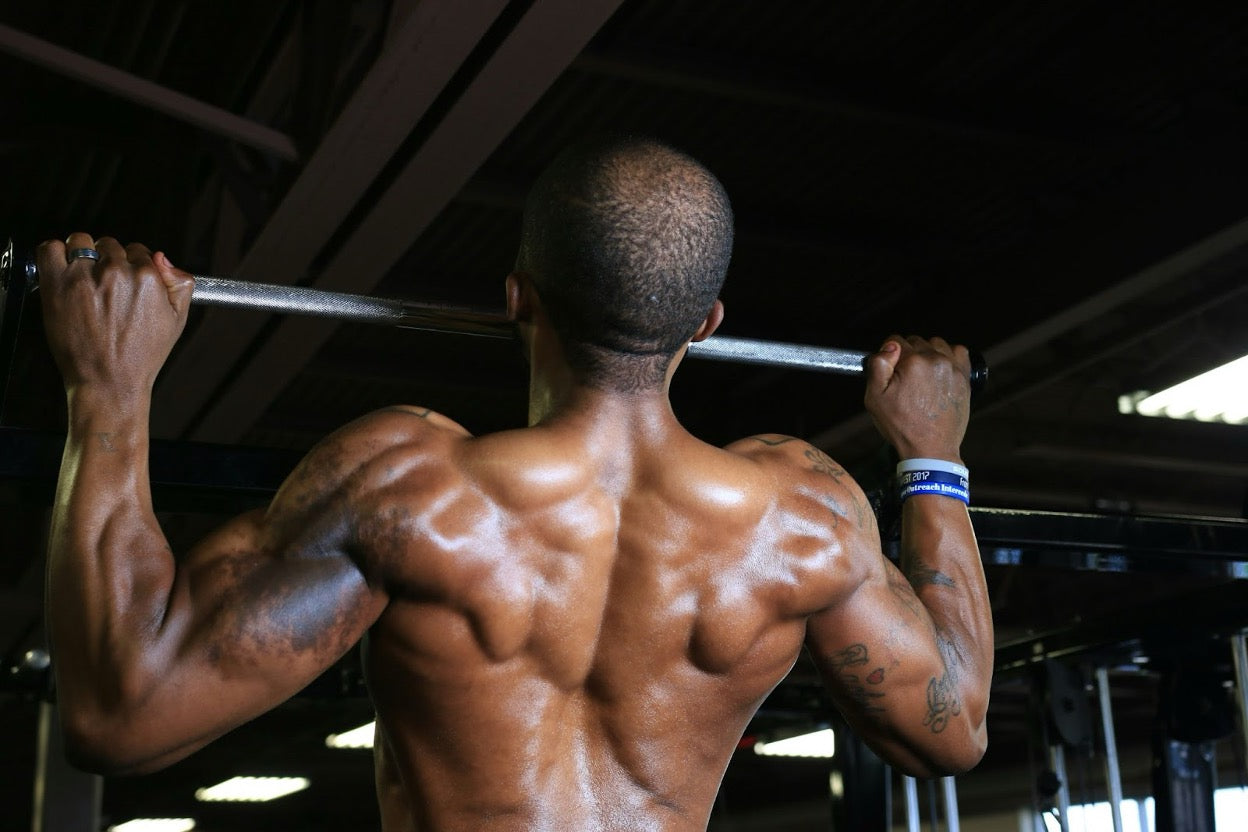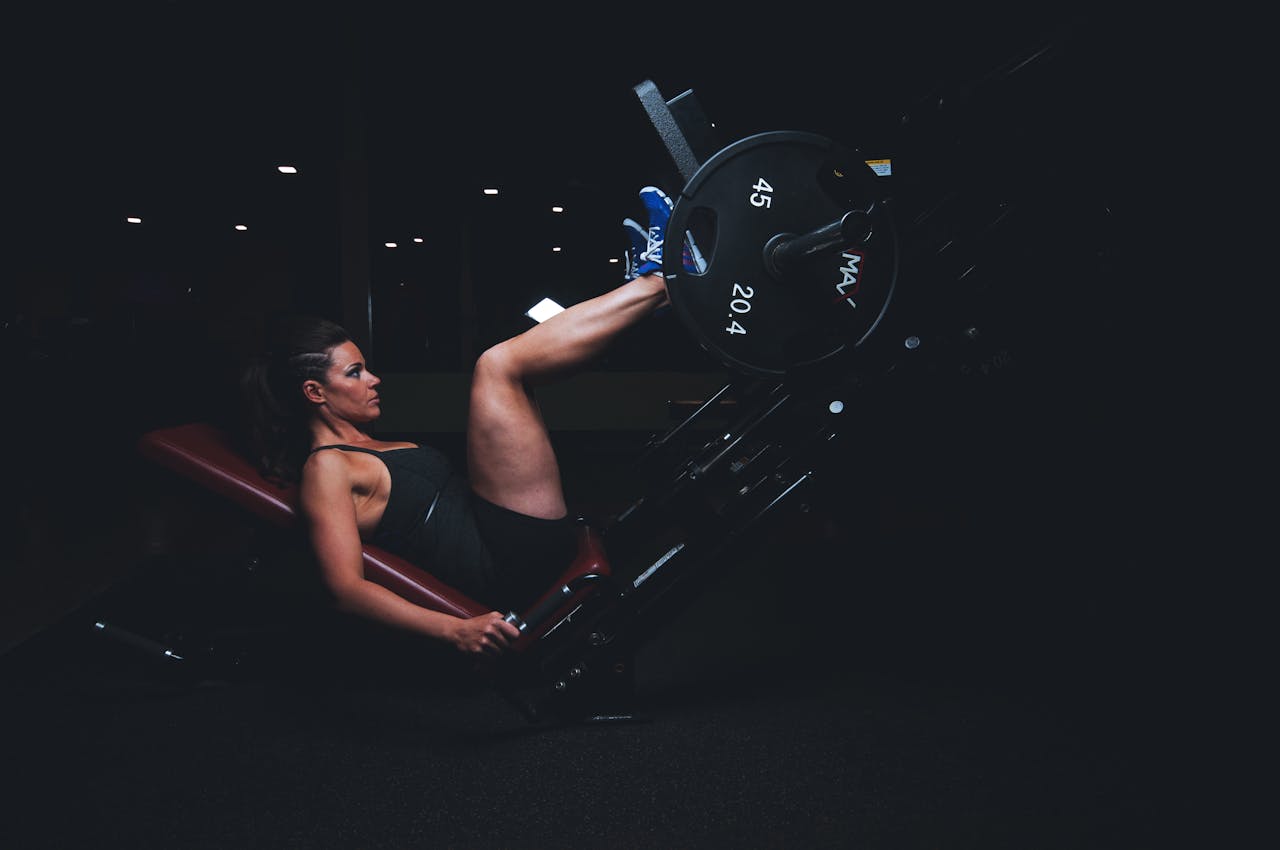Key Takeaways
- Chin-ups use an underhand grip that engages the biceps more, making them easier for beginners and ideal for arm-focused goals, while pull-ups target the lats and upper back for greater back strength.
- Both exercises strengthen major upper-body muscles, improve posture, and enhance grip strength, making daily tasks and other lifts easier.
- Chin-ups focus more on biceps and chest, while pull-ups emphasize lats, traps, and shoulders. Knowing the difference helps you match the exercise to your goals.
- Proper form with full range of motion and controlled movement is essential for maximum muscle engagement and injury prevention in both exercises.
- The SOLE SW121 Half Rack provides a durable, versatile, and safe way to perform both exercises at home, with multiple grip options and access to free SOLE+ guided workouts.
Chin Ups vs Pull Ups: What's the Real Difference?
Chin-ups and pull-ups are both highly effective for upper-body strength. They may look similar, but small grip variations and movement create distinct benefits for muscles, strength, and overall fitness.
Grip Position Defines Each Exercise
The main difference is hand position. Chin-ups use an underhand (palms facing you) grip, which engages the biceps more. Pull-ups use an overhand (palms facing away) grip, which targets the back and shoulders.
This small change affects muscle recruitment and difficulty—pull-ups generally feel harder because they rely more on back strength.
Muscle Activation Varies Between Exercises
Chin-ups emphasize biceps and chest, making them slightly easier for beginners or those focusing on arm strength. Pull-ups target the lats and upper back, helping develop a stronger, wider upper body.
Understanding these differences helps you pick the right exercise or combine both for a balanced upper-body workout.
|
Premium Home Gym Equipment with Award-Winning Quality!
Why Choose SOLE: ✓ Commercial-grade quality for home use 30-Day Money-Back Guarantee: Love it or return it, no questions asked. |
Muscles Worked: Chin Ups vs Pull Ups
Understanding which muscles each exercise targets can help you choose the right one for your goals. Here’s a breakdown:
1. Chin Ups
Primary Muscles:
- Biceps – The underhand grip allows your biceps to assist heavily in lifting your body weight.
- Chest – Engaged slightly more due to the supinated grip.
Quality equipment helps you focus on form, not on worrying about stability.
Secondary Muscles:
- Back – Supports the pulling motion.
- Core – Stabilizes your body throughout the movement.
Because of the underhand grip, chin-ups feel easier for most people. They’re excellent for beginners or anyone looking to focus on arm and chest strength.
2. Pull Ups
Primary Muscles:
- Lats – The overhand grip emphasizes lat activation, helping build width and strength in your back.
- Upper Back – Traps and rear delts work harder to stabilize and pull your body upward.
Secondary Muscles:
- Arms – Biceps assist but less than in chin-ups.
- Shoulders – Engage to maintain proper posture and control.
Pull-ups place greater emphasis on back and upper-body strength. They’re slightly more challenging for beginners but highly effective for long-term muscle development, posture, and overall pulling power.
Health Benefits of Chin-Ups and Pull-Ups
Both chin-ups and pull-ups are excellent for upper-body strength and overall fitness. While each targets different muscles, they provide unique benefits.
Health Benefits of Chin-Ups
Chin-ups primarily engage the biceps and chest, making them slightly easier for most people. They help build upper-body strength, especially in the arms, while also engaging the back and core for stabilization.
Hanging and pulling your body weight improves grip strength, which supports other lifts and everyday tasks like carrying objects or opening jars.
Chin-ups also promote better posture and spinal health by strengthening the stabilizing muscles in your back and core. Over time, they can help reduce back pain and support proper alignment.
As a compound exercise, chin-ups contribute to calorie burning and improved body composition, recruiting multiple muscles at once to help maintain or build lean muscle while supporting fat loss.
Health Benefits of Pull-Ups
Pull-ups emphasize the lats and upper back, making them slightly more challenging but highly effective for overall upper-body strength. They develop pulling power and enhance endurance for functional movements like climbing, lifting, or rowing.
They also improve grip strength, as your forearms and hands work to support your body weight throughout the movement.
Pull-ups engage stabilizing muscles in the back and core, promoting better posture and spine health. Strengthening these muscles can help prevent back issues and support long-term joint stability.
Finally, as a compound exercise, pull-ups burn calories and help improve body composition by targeting multiple muscle groups, supporting fat loss while building lean muscle.
Lower yourself slowly to increase time under tension and maximise muscle growth.
How to Perform the Perfect Chin Up and Pull Up
Both chin-ups and pull-ups are powerful exercises, but performing them with proper form is essential to maximize results and prevent injury. Let’s break down how to do each correctly.
Chin Up Technique
For chin-ups, start with your hands shoulder-width apart, palms facing you. Hang from the bar with your arms fully extended and shoulders engaged.
Engage your core and pull your chest toward the bar, keeping your movement controlled. Lower yourself slowly back to a full hang, maintaining tension in your muscles throughout.
Common mistakes include swinging the body or using momentum, performing only partial repetitions, or letting your shoulders shrug. Focusing on controlled motion and full range of movement ensures you target the correct muscles effectively.
Pull Up Technique
Pull-ups require a slightly wider than shoulder-width grip, with palms facing away from you. Begin by hanging fully with your shoulders engaged and core tight.
Pull your elbows down and back to lift your chin over the bar, then lower yourself slowly under control. Avoid shrugging your shoulders, using momentum, or letting your core sag, as these errors reduce effectiveness and increase injury risk.
Chin Ups vs Pull Ups: Side-by-Side Comparison
Understanding the differences between chin-ups and pull-ups can help you choose the exercise that best aligns with your goals. Here’s a quick comparison of key factors:
|
Feature |
Chin Up |
Pull Up |
|
Grip & Hand Position |
Underhand (palms facing you), shoulder-width apart |
Overhand (palms facing away), slightly wider than shoulder-width |
|
Primary Muscles Worked |
Biceps, Chest |
Lats, Upper Back |
|
Secondary Muscles Worked |
Back, Core |
Arms, Shoulders |
|
Difficulty |
Easier for most people due to biceps assistance |
Slightly harder; emphasizes back and shoulder strength |
|
Best For |
Beginners, arm and chest focus |
Advanced strength, back and posture development |
|
Health Benefits |
Builds arm and chest strength, improves grip, supports posture |
Builds back strength and width, improves grip, supports posture |
Which Exercise is Right for Your Goals?
Both chin-ups and pull-ups are highly effective, but your choice depends on your fitness goals and experience level.
When to Choose Chin-Ups
Chin-ups are great for building arm and chest strength due to the underhand grip. They’re also ideal for beginners looking for an easier entry into bodyweight pulling exercises and for biceps-focused workouts, as the arms assist heavily in lifting.
When to Choose Pull-Ups
Pull-ups excel at developing the back, targeting the lats and upper back for strength and width. They also strengthen shoulders and core and provide a more challenging workout for advanced training and overall pulling power.
Combining Both
Alternating chin-ups and pull-ups in your routine ensures balanced muscle development, preventing overemphasis on one muscle group. Combining both exercises helps you build a stronger, more defined upper body while supporting overall fitness and functional strength.
Build Your Ultimate Home Gym with the SOLE SW121 Half Rack
The SOLE SW121 Half Rack is a solid foundation for any home gym. Made from commercial-grade steel with a durable multilayer finish, it’s designed to handle squats, deadlifts, pull-ups, and more. Pair it with the SOLE SW116 adjustable bench to expand your exercise options.
The SOLE SW121 pull-up station offers stability, comfort, and multiple grip options.
Every purchase comes with the FREE SOLE+ App, offering hundreds of classes and thousands of hours of guided workouts. This ensures you can train smarter, improve technique, and stay motivated without additional subscription costs.
Key features include:
- Safety Bars & J-Hooks: Adjustable for various lifts and exercises.
- High Weight Capacity: Supports up to 1,000 lbs for heavy-duty training.
- Organized Storage: Four plate pegs and two dumbbell holders.
- Versatility: Ideal for pull-ups, squats, bench presses, and more.
- Durability: Heavy-duty steel construction with multilayer coating ensures long-lasting performance.
Add a SOLE Equipment Mat to protect your floors, reduce vibration, and prolong the life of your gym setup.
If you’re just starting or pushing your limits as an advanced lifter, the SW121 Half Rack supports strength development, safe lifting, and overall fitness goals, backed by SOLE’s warranty and dedication to quality.
Frequently Asked Questions (FAQs)
Which is easier, chin-ups or pull-ups?
Chin-ups are usually easier for beginners because the underhand grip recruits more biceps, making the pull less demanding on the back. This grip also allows new lifters build confidence and strength faster.
Can I do both exercises in the same workout?
Yes, combining chin-ups and pull-ups in one session helps in building balanced upper-body strength. Alternating grip styles targets different muscle groups, prevents plateaus, and ensures you’re not overemphasising one area while neglecting another.
How many reps should I aim for as a beginner?
Beginners should aim for 3–5 controlled reps per set, prioritising proper form. As strength improves, gradually increase reps or add resistance to continue progressing while avoiding poor technique and unnecessary strain.
Can these exercises help with posture?
Yes, both exercises strengthen the upper back, lats, and core stabilisers. This improves spinal alignment, supports shoulder health, and helps correct rounded shoulders, reducing the risk of posture-related discomfort or chronic back pain.
Do I need special equipment for chin-ups and pull-ups?
You’ll need a sturdy pull-up bar or a half rack like the SOLE SW121, which offers multiple grip positions and stability. This ensures safety, comfort, and versatility for both exercises at home.




Leave a comment
This site is protected by hCaptcha and the hCaptcha Privacy Policy and Terms of Service apply.